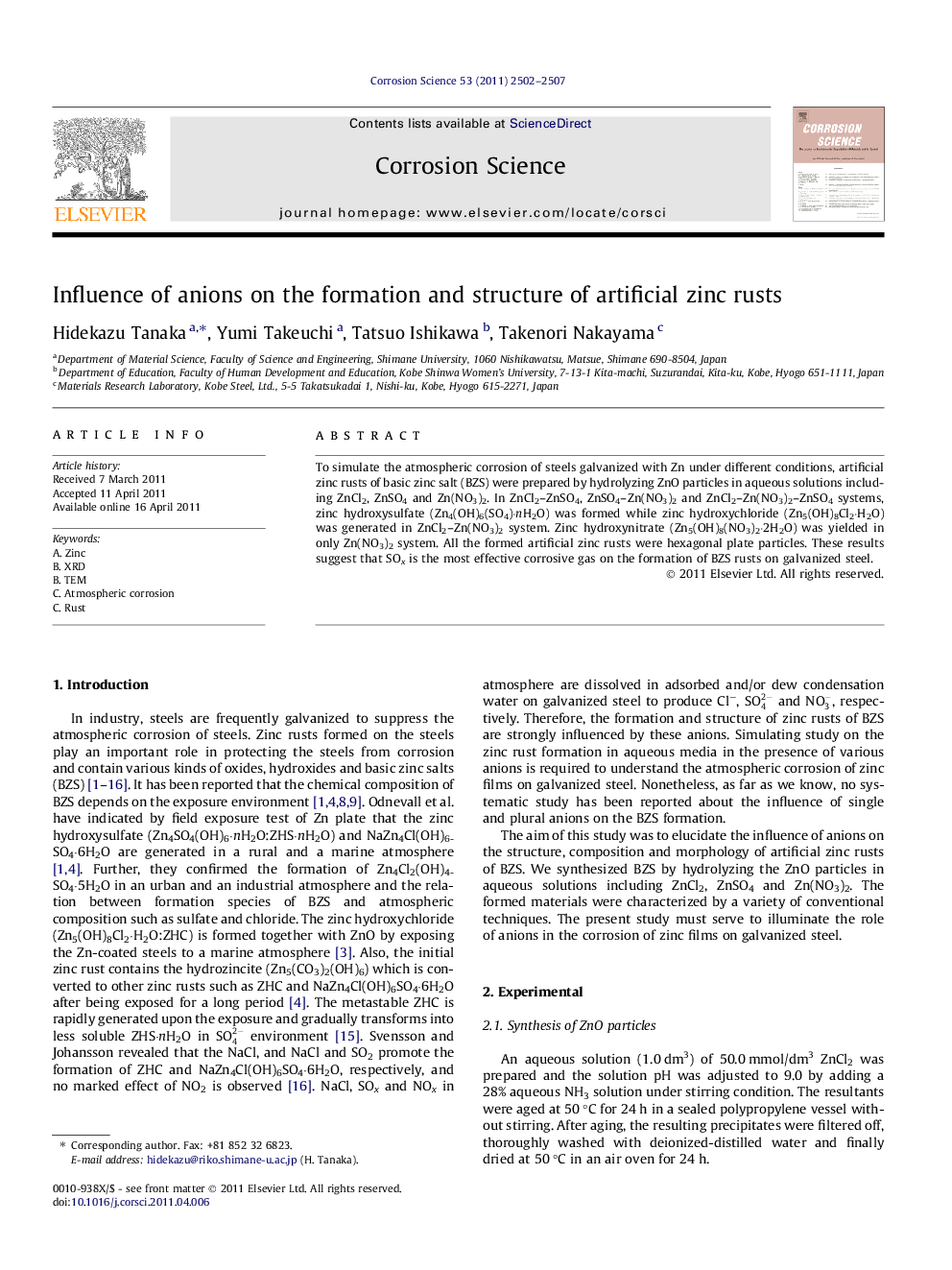| Article ID | Journal | Published Year | Pages | File Type |
|---|---|---|---|---|
| 1470015 | Corrosion Science | 2011 | 6 Pages |
To simulate the atmospheric corrosion of steels galvanized with Zn under different conditions, artificial zinc rusts of basic zinc salt (BZS) were prepared by hydrolyzing ZnO particles in aqueous solutions including ZnCl2, ZnSO4 and Zn(NO3)2. In ZnCl2–ZnSO4, ZnSO4–Zn(NO3)2 and ZnCl2–Zn(NO3)2–ZnSO4 systems, zinc hydroxysulfate (Zn4(OH)6(SO4)·nH2O) was formed while zinc hydroxychloride (Zn5(OH)8Cl2·H2O) was generated in ZnCl2–Zn(NO3)2 system. Zinc hydroxynitrate (Zn5(OH)8(NO3)2·2H2O) was yielded in only Zn(NO3)2 system. All the formed artificial zinc rusts were hexagonal plate particles. These results suggest that SOx is the most effective corrosive gas on the formation of BZS rusts on galvanized steel.
► Artificial zinc rusts of basic zinc salt are prepared by hydrolyzing ZnO particles in aqueous solutions including ZnCl2, ZnSO4 and Zn(NO3)2. ► Existence of SO42- promotes the formation of zinc hydroxysulfate in ZnCl2–Zn(NO3)2–ZnSO4 system and zinc hydroxychloride is yielded free from SO42-. ► SOx strongly affects on the formation of zinc rust of zinc hydroxysulfate on galvanized steel.
